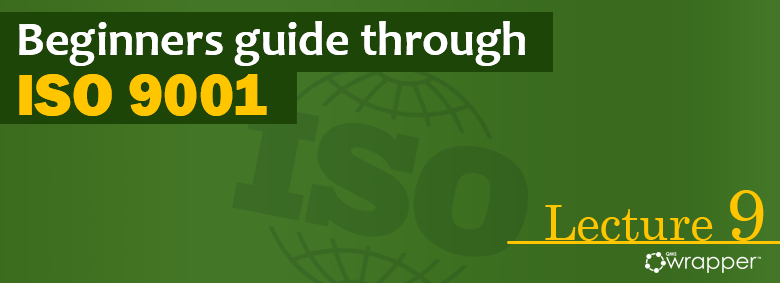
Resources of Support – Lecture 9
Lecture summary:
- The ISO 9001 Standard refers to five kinds of resources: human resources, knowledge, processes environment, infrastructures, and monitoring and measuring resources.
- Each one of them represents a support tool for the QMS to meet your organization’s goals
- You have to review each of the resources from time to time to determine whether the available resources are enough or if you need to provide more.
The cornerstones of the Quality management system are, in fact, resources, and that’s why you must define, manage, and control all the accompanying resource elements. You have to think of them as critical zones and scopes of the realization process. They should be support for achieving your QMS goals and must be aligned with the objectives of QMS.
General
This section takes a broad view of items needed to realize the requirements of ISO 9001. Customer and regulatory requirements, quality policy, quality objectives, realization process, improvement – all these are strategic aspects of your QMS. The standard expects specification of what resources are needed to assist and support you in achieving these strategic aspects.
Human resources
Human resources have important weight In this part and its effects on the realization process. It’s expected that you determine and provide the personnel necessary for the effective implementation, operation, and control of its QMS and its processes.
You have to determine all the business and regulatory requirements and then to verify them. To do this, ask yourself the following:
- Which are the functions or roles necessary for the operation of the QMS?
- Which qualifications do those functions or roles require?
- What is the necessary evidence?
Infrastructure
What is the infrastructure? Infrastructure is a structure that provides a framework that supports the operation of a system. In general, the ISO 9001 Standard requires you to ensure the availability of appropriate infrastructures throughout the realization processes. Keep in mind that control over the infrastructures shall reach all levels of process support.
It’s important to know - according to the ISO 9001 Standard, infrastructures include software (the collection of functions and programs that provide instructions for a unit for the operation of activities) as well as hardware (the physical layout of components or parts of a system).
Process environment
ISO 9001 standard defines the process environment as a territory for the operation of processes. The process environment has to provide you, or the manufacturer or service provider with the optimal conditions for the realization processes and thus has a direct effect on products or services.
Organizational Knowledge
Knowledge - the ISO standard (finally) gives the much-deserved importance to knowledge. In the eyes of quality management, knowledge promotes the main goal: to improve processes by predicting, preventing, and avoiding nonconformities and maintaining customer satisfaction through the use of knowledge. It’s considered a critical resource and requires a clear definition of processes or actions needed for identifying, obtaining, sharing, protecting, and maintaining knowledge that is necessary for the effective operation of the processes and making it accessible to the appropriate parties at the appropriate time and place.
Monitoring and measuring resources
And this part of resources is considered as the key process elements of the realization process. By monitoring and measurement, you will determine if the products meet specifications.
How do we know if a device is considered a monitoring and measuring device and must be controlled? When the device measures a product characteristic that is relevant to its intended use and is needed to verify conformity to product requirements, it means that this device has some responsibility regarding the quality of the product. Each of such devices must be controlled—identified, maintained, preserved, and calibrated. The goal is to ensure that the device can perform a series of tasks.
PREVIOUS LESSON NEXT LESSON ALL LESSONS
ISO 9001 implementation: Mandatory documents and records
Continual Improvement and Nonconformity and corrective action – Lecture 24
Management review – Lecture 23